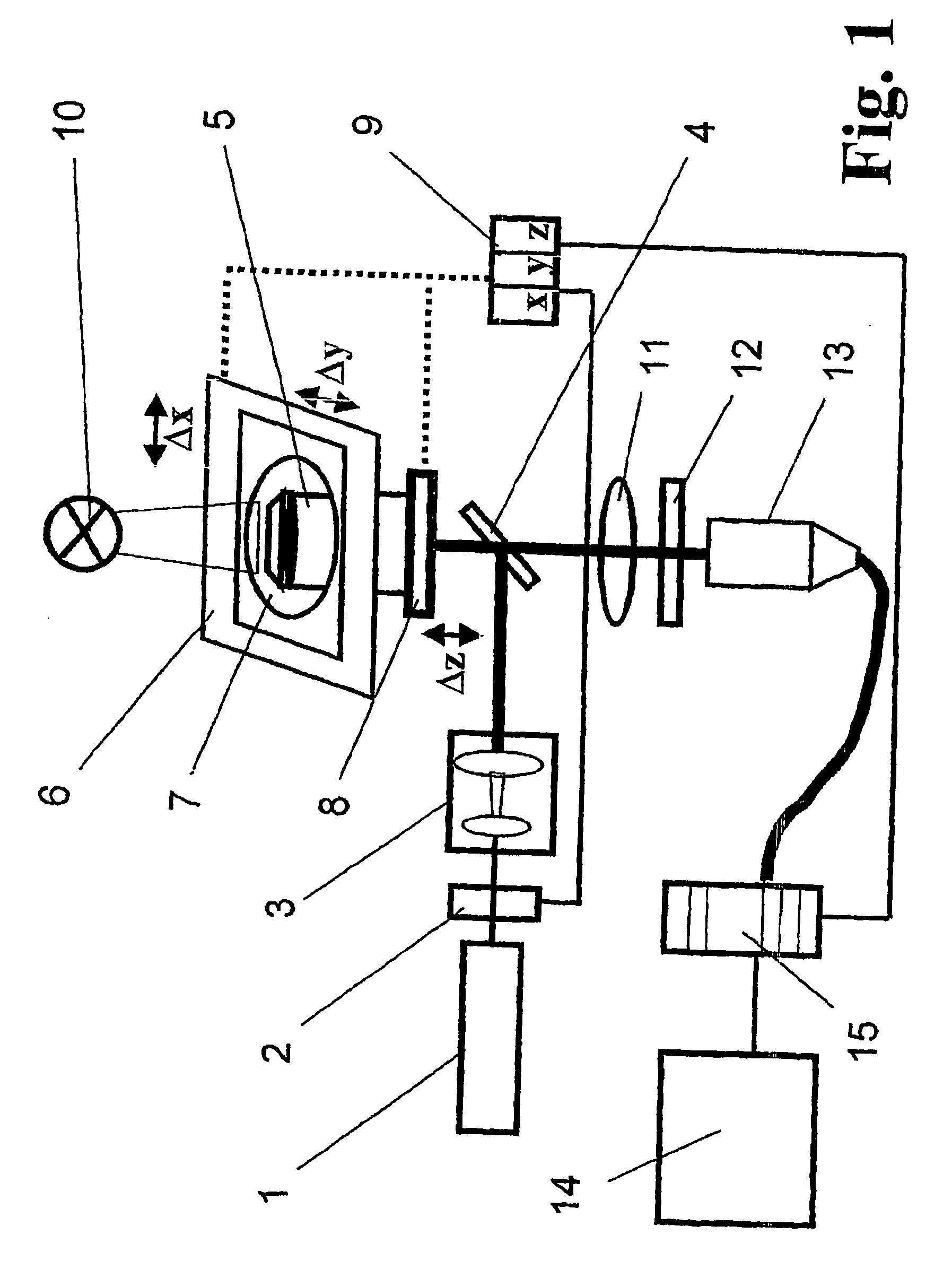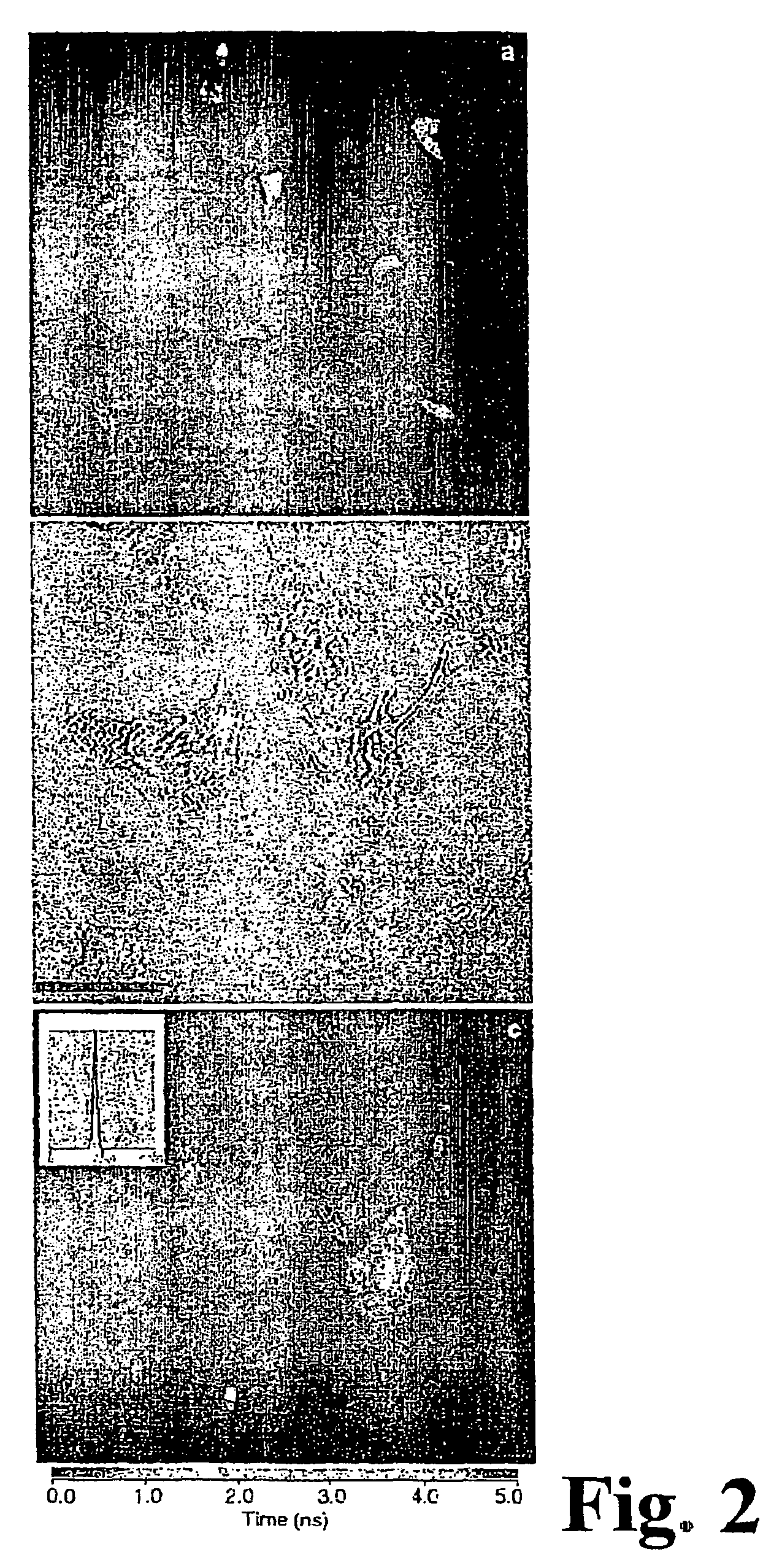Method for transferring molecules in vital cells by means of laser beams and arrangement for carrying out said method
a technology of laser beams and molecules, applied in biochemistry apparatuses, biochemistry apparatus and processes, applications, etc., can solve the problems of small health risks involved in activating individual attenuation, fatal consequences particularly for patients with weakened immune defenses, and currently no vaccine for many diseases available, and achieve high transfer efficiency
- Summary
- Abstract
- Description
- Claims
- Application Information
AI Technical Summary
Benefits of technology
Problems solved by technology
Method used
Image
Examples
Embodiment Construction
[0044]The invention is described with respect to its process flow—without limiting generality—with reference to an arrangement shown schematically in FIG. 1.
[0045]The arrangement basically comprises a laser 1 with a shutter 2 and beam expander 3 arranged in front of it, an objective 5, a motor-operated sample stage 6 with target cells 7 located thereon, which motor-operated sample stage 7 supports the target cells so as to be movable relative to the laser spot generated by the objective 5 by means of a z-adjustment unit 8 of the objective 5 and an x,y,z-adjustment unit 9, an additional illumination source 10, and a CCD camera 13 for recording an image of the treated target cells 7 that is generated by the illumination source 10.
[0046]A mode-synchronized 80-MHz titanium-sapphire laser, as laser 1, is coupled into a laser scanning microscope and is focused in a diffraction-limited manner on a submicrometer spot by means of a 40× objective 5 having the high numerical aperture of 1.3. T...
PUM
| Property | Measurement | Unit |
|---|---|---|
| pulse repetition frequency | aaaaa | aaaaa |
| wavelength range | aaaaa | aaaaa |
| time | aaaaa | aaaaa |
Abstract
Description
Claims
Application Information
 Login to View More
Login to View More - R&D
- Intellectual Property
- Life Sciences
- Materials
- Tech Scout
- Unparalleled Data Quality
- Higher Quality Content
- 60% Fewer Hallucinations
Browse by: Latest US Patents, China's latest patents, Technical Efficacy Thesaurus, Application Domain, Technology Topic, Popular Technical Reports.
© 2025 PatSnap. All rights reserved.Legal|Privacy policy|Modern Slavery Act Transparency Statement|Sitemap|About US| Contact US: help@patsnap.com


